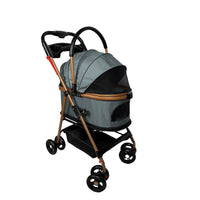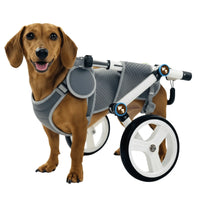
How Many Times should I Feed my Cat?
Determining how often to feed your cat can be a puzzle for many pet owners. Cats are unique in their dietary needs and habits, and understanding these can help you ensure your feline friend remains healthy and happy. So, how many times a day should a cat eat? Let's delve into the details.
Factors Influencing Feeding Frequency
Age of the Cat:
- Kittens: Growing kittens have high energy needs and should eat more frequently. Typically, kittens require 3-4 meals a day. As they approach 6 months of age, you can start transitioning them to a more regular feeding schedule.
- Adults: Adult cats usually do well with 2 meals a day. Feeding them once in the morning and once in the evening can help maintain their energy levels and manage their weight effectively.
- Seniors: Older cats may need adjustments based on their health and activity levels. Some senior cats might require smaller, more frequent meals, while others may do well with 2 meals a day.
Type of Food:
- Dry Food: If you're feeding dry food, it can be left out for longer periods, allowing cats to graze throughout the day. However, it's still important to monitor their intake to prevent overeating and weight gain.
- Wet Food: Wet food generally requires more structured feeding times. Most owners opt for 2-3 meals a day when feeding wet food to manage portion control and to keep the food fresh.
Health and Medical Conditions:
Cats with certain health conditions, such as diabetes or kidney disease, may need specialized feeding schedules. Consult with your veterinarian to tailor a feeding plan specific to your cat's health needs.
Weight and Activity Level:
Overweight or less active cats might benefit from a feeding schedule that controls portion sizes and prevents continuous snacking. Conversely, very active cats or those with high energy needs may need more frequent feeding.
Feeding Schedule Recommendations
- Twice a Day: This is a common and practical feeding schedule for many adult cats. Splitting the daily food intake into two meals helps regulate their metabolism and can aid in preventing obesity. For most healthy adult cats, feeding them in the morning and evening is a balanced approach.
- Three to Four Times a Day: This frequency is often used for kittens, older cats, or those with specific dietary needs. It helps ensure they receive adequate nutrition throughout the day without overloading their digestive system at any one time.
- Free-Feeding: With dry food, some owners choose to free-feed, which allows cats to eat throughout the day. This can be convenient but requires careful monitoring to prevent overeating. It’s usually not recommended for cats prone to weight gain or those with health issues.
The ideal feeding frequency for your cat depends on various factors including their age, health, and the type of food they eat. While twice a day is a standard recommendation for many adult cats, adjusting the schedule to fit your cat’s specific needs and preferences is crucial, it is recommended to use an automatic feeder that will help you control how much food they get even when you are not at home. Always monitor your cat's weight and health, and consult with your veterinarian if you have any concerns or if a specialized feeding schedule is necessary. By understanding and catering to your cat's unique dietary requirements, you’ll help ensure they stay healthy and content.
Share



